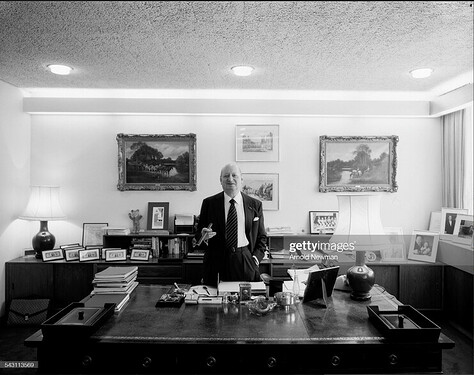Photo of Duke of Wellington. Amazing!
Izzy x
I follow him on Twitter too (Babelcolour, not the Duke of Wellington). He posts some incredible pictures. It makes a change to the negativity and infighting that usually fills up my timeline.
What I find interesting about the photograph is that it seems remarkably sharp given the length of exposure needed at that time. OF course one’s looking at a tiny image on a screen and it may be that the photo is actually quite large and contacted printed from a large plate, but not actaully so crisp. It would have been worth posting an image of the original for a comparison to see what the 'reconstruction actually consisted .
Would be interested in @captainendeavour’s thoughts on the subject…
I understand that there were special rods etc used to help maintain the pose for the required long exposure.
He’s also posted that. I’ll include a link to his Twitter thread rather than just share the image.
https://twitter.com/StuartHumphryes/status/1649834519829139459?t=tn0O1n9fcpC6vNN50kIuNQ&s=19
I’ve come across those because of the number of people in the Victorian period who wanted to include someone who’d just died in a family photo. Never occurred to me that the early photos might need them for living people too…
Good old Beaky. I have an unreasonable number of books about him.
The photograph has an overall softness to it but the softness is consistent over the whole image. There is no sign of camera shake. It is true that contraptions were used to keep a sitter’s head still. I would hazard a guess that Old Beaky would be outraged at the suggestion he be clamped into one of those .
It is remakable how some people are able to keep still for seconds on end. The late Arnold [Seven Presidents] Newman’s standard exposure when shooting portraits with his favourate 5" x 4" format was f16/1sec. His record, while I was his assistant, was 6 seconds.
I proposterised with Arnold at the time. “Nobody can hold 6 seconds, Arnold!” Well, Lew Grade did. The reason it worked is that Grade is a small part of an otherwise motionless scene. He’s leaning against the desk. He did well to keep his head still - he was a very relaxed fellow. I can’t remember now but I image a roll of 35mm was knocked off as insurance.
And he gave me a glass of Chateau d’Yquem afterwards.
What I have always found wonderful with photographs of the Victorian and Edwardian period is the tonal range. It’s a result of large format originals. This is the reason why photographers continued to use the Nikon D700 - a full frame camera of 12Mpx - for years after Canon and Nikon had introduced cameras with double the resolution and more. Big, fat pixels on a 36mm x 24mm sensor gave wonderful tonal gradation.
There was a show of Roger Fenton’s [1819-1869] photographs at The Hayward in 1988. My g/f, a painter, was amazed at the beautifully fine graduation of the black and white still lives. The result of contact prints from large glass negatives, as I think Beaky’s picture was.
Old Beaky, as his officers called him, was a great exponent of the one-liner. “Print, and be damned!” is his most famous. Taking Queen Victoria around The Crystal Palace Great Exhibition of 1851, Her Maj commented on the number of sparrows which were flying about. Beaky’s remedy was short and to the point, “Sparrow hawks, ma’am. Sparrow hawks”.
